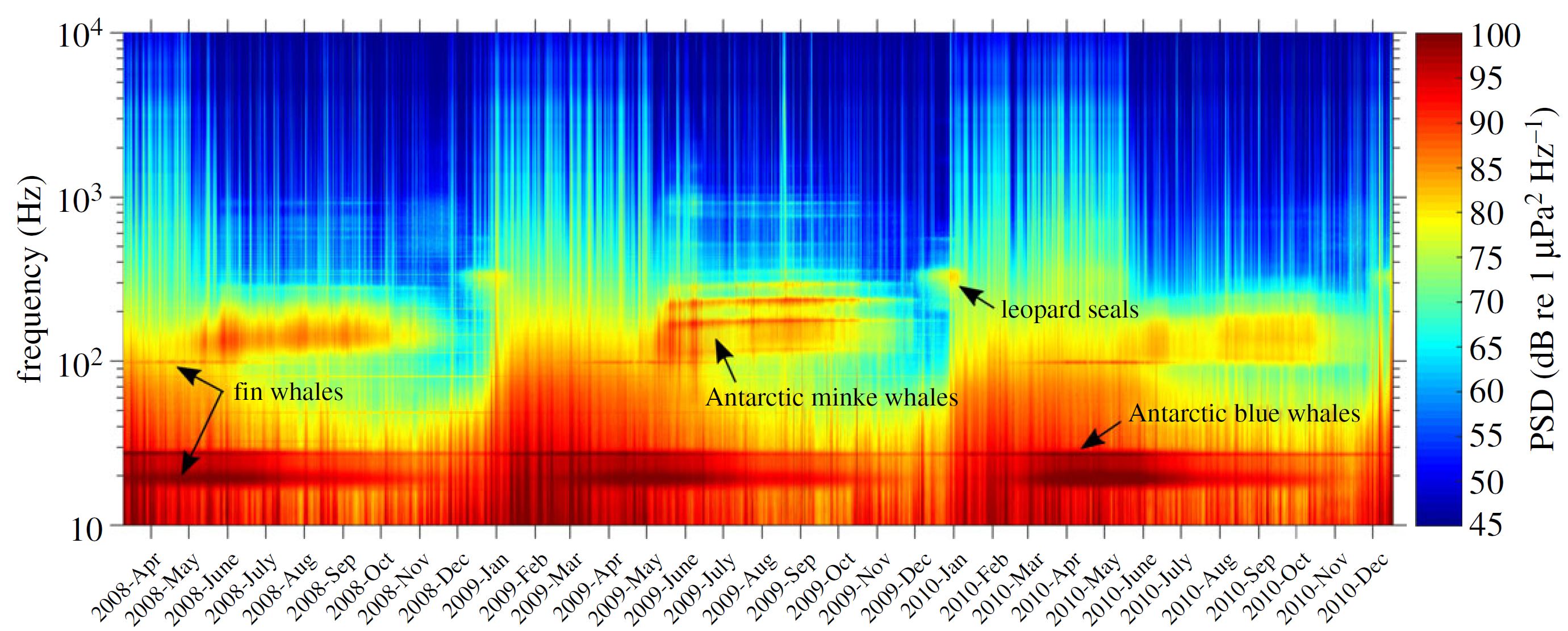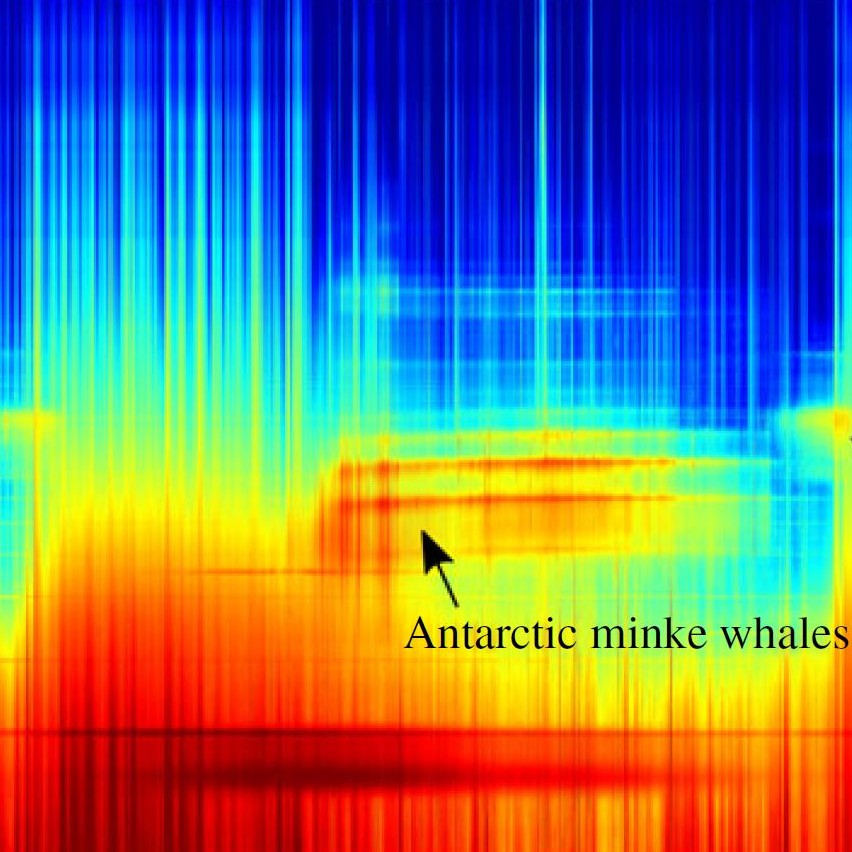Ocean Acoustics
We use underwater sound to study distribution and density of animals. If the example below, you can see a "SoundScape", a Long-Term Spectral Average (LTSA) which is a way to visualize underwater sound received in one location, and that can be used to observer long-term trends of the underwater noise background.

Currently we are running the following Projects:
SAMBAY
Sambay is a model bay for Density Estimation using Passive Acoustic Monitoring Techniques: Passive acoustic monitoring (PAM) provides an affordable technique to collect presence observations over extended periods of time. For long term monitoring, autonomous acoustic recorders are usually distributed over the study area on moorings or buoys, and can record data over several years without the need of maintenance. In recent years there has been a substantial effort to develop statistical methods which allow to calculate abundances from passive acoustic observations. Even though the statistical background is sound, several assumptions (i.e. call rates of possibly context and sex dependent vocalizations) are necessary to be able to calculate abundance. SAMBAY aims to substantiate the influence of different covariates on the density estimation using passive acoustic monitoring.

Dynamic Marine Mammal distribution
The long-term scientific goal of this project is to calculate the dynamic distribution of marine mammal population density and to map its spatial heterogeneity by exploiting all available acoustic information, especially the soundscape information describing the baseline statistics, as well as the variability, of the acoustic environment. The specific aim of the proposed study is to map and predict the large-scale spatial distribution of marine mammal vocalizations based on existing multi-level passive acoustic monitoring data from sparse arrays as well as synthetic data. We will couple acoustic propagation, ambient sound, ocean and habitat models using a Bayesian framework to yield a maximum likelihood distribution mapping.

Relevant publications
- *Goldwater M, Zitterbart DP, Wright D, Bonnel J. “Automatic Detection and Ranging of impulsive sounds in a shallow water waveguide with artificial intelligence”, The Journal of the Acoustical Society of America 153, 1094 (2023), https://doi.org/10.1121/10.0017118
- Zitterbart DP, Bocconcelli A, J. Bonnel, Ochs M, „Tossit, a low-cost mooring system for low-noise ropeless passive acoustic monitoring deployments”. HardwareX, 2022, e00304, ISSN 2468-0672, https://doi.org/10.1016/j.ohx.2022.e00304
- *Goldwater M, Bonnel J, Wright D, Cammereri A, Zitterbart DP, „Detection of multi-mode signals using machine learning”, JASA Express Letters 1, 106002 (2021); https://doi.org/10.1121/10.0006718
- Bonnel J, Bazile Kinda G and Zitterbart DP, “Low-frequency ocean ambient noise on the Chukchi Shelf in the Changing Arctic.“, The Journal of the Acoustical Society of America 149, 4061 (2021), https://doi.org/10.1121/10.0005135
- Menze S, Zitterbart DP, Biuw M. Boebel O, “Estimating the distribution of vocalizing animals from ambient sound spectra using widely spaced recorder arrays and Bayesian inversion”, The Journal of the Acoustical Society of America 146 (6), 4699 (2019), Pages 4699–4717, https://doi.org/10.1121/1.5139406